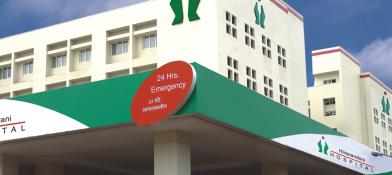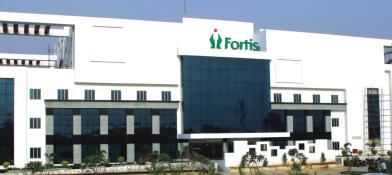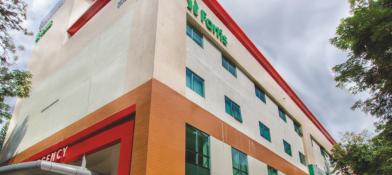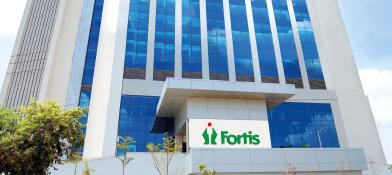Oophorectomy (ovary removal surgery)
Overview:
Oophorectomy is the method of removing single or both ovaries surgically. Ovaries are the reproductive organs in women that synthesize hormones. These hormones are important in the menstrual cycle and important for bone or heart health. Oophorectomy may be indicated to remove any pathology, preserve fertility, or reduce any risk of developing some disease conditions.
Indications of Oophorectomy:
Oophorectomy is indicated to remove one or both ovaries. It is indicated in conditions of endometriosis which is a condition of growth of cells from the uterus to other parts of the body. It is also indicated in conditions of benign growths like cysts, and benign tumors. It should also be done as a preventive surgery when there is an increased risk of ovarian cancer, breast cancer and BRCA gene mutations.
Oophorectomy is also indicated in ovarian torsion where the ovaries twist around the blood vessels causing severe pain. It is also done in cases of ovarian infections called pelvic inflammatory diseases or tubo-ovarian abscesses. It is also done as an elective surgery during hysterectomy. This is also indicated when there is a risk of re-operation or cancer. When the risk or recurrence of a disease is more than the benefit of menopause, oophorectomy is indicated.
Advantages of Oophorectomy:
Oophorectomy has the advantage of reducing the spread of disease in conditions like ovarian cancer. It also minimizes the symptoms related to certain diseases in people who are at high-risk.
Types of Oophorectomy:
There are different types of oophorectomies. Based on the parts removed, they are
- Unilateral Oophorectomy where One side ovary is removed.
- Bilateral Oophorectomy is a procedure where both ovaries are removed.
- Salphingo-oophorectomy is where one ovary and its fallopian tube are removed.
- Bilateral Salphingo-oophorectomy where both ovaries and fallopian tubes are removed.
- Hysterectomy with scalping-oophorectomy is procedure where the uterus is removed along with the ovary and fallopian tube.
- Total Hysterectomy with scalping-oophorectomy is where the uterus is removed along with the cervix, both ovaries and fallopian tubes.
Before the procedure:
Before undergoing an oophorectomy, an individual should understand the importance and necessity of the procedure by discussing it with the HCP. All the medications taken by the individual should be informed to the HCP along with the history of previous diseases, infections, surgeries, and allergies. Based on the medications taken, some medicines are advised to stop depending on the health condition and risk vs. benefits. These include over-the-counter medications, blood thinners, and opioid painkillers. Other medicines will be prescribed by the HCP before undergoing a biopsy.
Certain routine blood and urine investigations are carried out to rule out any infections or other conditions not known to the individual. Advanced imaging techniques like MRI, CT scan, or ultrasound may be done to study the extent of the damage or spread or the disease. Depending on the extent of the spread of the disease, oophorectomy is planned. Oophorectomy will be done on an empty stomach. Hence, it is advisable to refrain from eating before the surgery.
During the procedure:
Oophorectomy is done under general anesthesia. Small incisions or cuts are made to access the ovaries. The cuts made depend on the type of surgery.
- Open oophorectomy: Laparotomy or open oophorectomy is a procedure where longer incisions are made to access the ovaries. This has a high risk of infection and takes a long time to recover.
- Laparoscopic Oophorectomy: small incisions are made to access the ovaries. Using a small camera to look inside the abdomen, oophorectomy is done. Laparoscopy has the advantage of less risk of infection and faster recovery. This is a minimally invasive approach.
- Robotic Oophorectomy: This is also done using small incisions. Using a surgical robot, the surgery is done. Controllers are used to operating the tools.
- Vaginal Surgery: It is a minimally invasive approach that carries a minimal risk of infection and has a faster recovery. This is done at the same time as removing ovaries.
Based on these approaches, an oophorectomy is done. Depending on the spread of infection or tumor or disease and the treatment plan either only ovaries or other parts like fallopian tubes, uterus are removed. After removing sutures are placed.
After the procedure:
After the surgery, an individual is taken to the recovery room and monitored till the vitals stabilize. Recovery depends on the type of surgery and the amount of previous disease. Laparoscopic and vaginal surgeries can be done as outpatient procedures and one can return home after the surgery. Laparotomy surgeries require more time to recover. An individual has to restrict activities for three to six weeks after the surgery.
Risks and complications:
Certain risks and complications associated with the procedure include bleeding, infections, and damage to the nearby organs. Certain complications include not being able to get pregnant due to the removal of both ovaries and sometimes certain cancerous growths may rupture during the surgery spilling the cancer cells and causing further spread. Sometimes remaining ovarian cells can cause period-like symptoms including pelvic pain. This is called ovarian remnant syndrome.
Oophorectomy leads to the stoppage of the menstrual cycle. This is called menopause. This is due to the loss of hormones due to the removal of the ovaries. Sudden loss of ovaries causes symptoms like hot flashes, vaginal dryness, depression, anxiety, heart diseases, reduced sexual drive, and decreased bone density. If one ovary is removed and the other remains one can still get periods.
Conclusion:
Oophorectomy is a surgical procedure of removing ovaries in diseases conditions and cancers. This can be done by different approaches based on the spread of the disease. It offers symptom relief and mitigates the disease progression improving the quality of life.
Popular Searches :
Hospitals: Cancer Hospital in Delhi | Best Heart Hospital in Delhi | Hospital in Amritsar | Hospital in Ludhiana | Hospitals in Mohali | Hospital in Faridabad | Hospitals in Gurgaon | Best Hospital in Jaipur | Hospitals in Greater Noida | Hospitals in Noida | Best Kidney Hospital in Kolkata | Best Hospital in Kolkata | Hospitals in Rajajinagar Bangalore | Hospitals in Richmond Road Bangalore | Hospitals in Nagarbhavi Bangalore | Hospital in Kalyan West | Hospitals in Mulund | Best Hospital in India | | Cardiology Hospital in India | Best Cancer Hospital in India | Best Cardiology Hospital in India | Best Oncology Hospital In India | Best Cancer Hospital in Delhi | Best Liver Transplant Hospital in India
Doctors: Dr. Rana Patir | Dr. Rajesh Benny | Dr. Rahul Bhargava | Dr. Jayant Arora | Dr. Anoop Misra | Dr. Manu Tiwari | Dr. Praveer Agarwal | Dr. Arup Ratan Dutta | Dr. Meenakshi Ahuja | Dr. Anoop Jhurani | Dr. Shivaji Basu | Dr. Subhash Jangid | Dr. Atul Mathur | Dr. Gurinder Bedi | Dr. Monika Wadhawan | Dr. Debasis Datta | Dr. Shrinivas Narayan | Dr. Praveen Gupta | Dr. Nitin Jha | Dr. Raghu Nagaraj | Dr. Ashok Seth | Dr. Sandeep Vaishya | Dr. Atul Mishra | Dr. Z S Meharwal | Dr. Ajay Bhalla | Dr. Atul Kumar Mittal | Dr. Arvind Kumar Khurana | Dr. Narayan Hulse | Dr. Samir Parikh | Dr. Amit Javed | Dr. Narayan Banerjee | Dr. Bimlesh Dhar Pandey | Dr. Arghya Chattopadhyay | Dr. G.R. Vijay Kumar | Dr Ashok Gupta | Dr. Gourdas Choudhuri | Dr. Sushrut Singh | Dr. N.C. Krishnamani | Dr. Atampreet Singh | Dr. Vivek Jawali | Dr. Sanjeev Gulati | Dr. Amite Pankaj Aggarwal | Dr. Ajay Kaul | Dr. Sunita Varma | Dr. Manoj Kumar Goel | Dr. R Muralidharan | Dr. Sushmita Roychowdhury | Dr. T.S. MAHANT | Dr. UDIPTA RAY | Dr. Aparna Jaswal | Dr. Ravul Jindal | Dr. Savyasachi Saxena | Dr. Ajay Kumar Kriplani | Dr. Nitesh Rohatgi | Dr. Anupam Jindal
Specialties: Heart Lung Transplant | Orthopedic | Cardiology Interventional | Obstetrics & Gynaecology | Onco Radiation | Neurosurgery | Interventional Cardiology | Gastroenterologist in Jaipur | Neuro Physician | Gynecologist in Kolkata | Best Neurologist in India | Liver Transfer






























